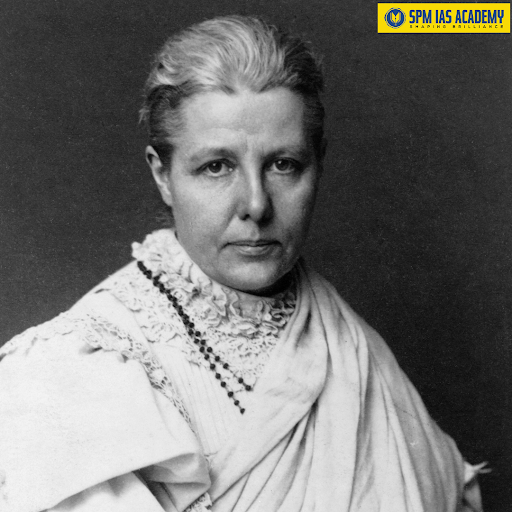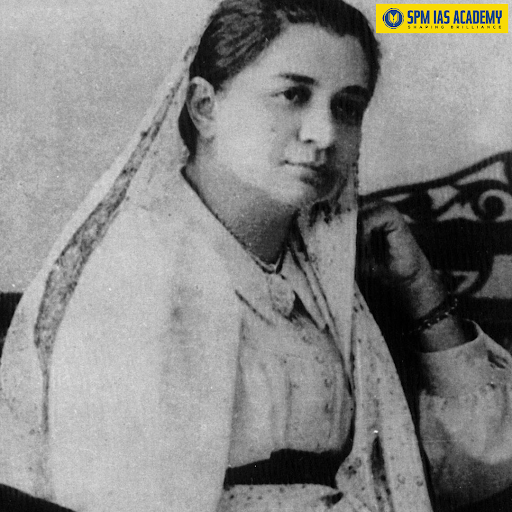“Amidst the struggle for independence, the women of India were the silent architects of change, laying the foundation of a liberated nation with their resilience, sacrifice, and indomitable spirit.”
The participation of women freedom fighters in the Indian Freedom Struggle was vital. Their involvement influenced the nation’s quest for independence. Throughout this challenging journey, women exhibited remarkable bravery, resolve, and patriotic fervor. They assumed a variety of roles. Some rallied the masses and spearheaded processions. Others organized protests and aided underground movements. Their contributions were significant and helped motivate others to participate.
Furthermore, the involvement of women was important in taking the independence movement forward. The women national leaders also played an important role in transforming gender roles and societal standards. Women from diverse regions, backgrounds, and life experiences came together under the cause of freedom. Their efforts left a profound impact on India’s history. This engagement helped alter the social structure for future generations.
In this article, we will look into the role of women freedom fighters in the Indian freedom struggle.
Role of Women in the Indian Freedom Struggle
Women made an important contribution to the Indian freedom movement. They engaged in significant numbers and had a notable impact at both local and national scales. Prominent women national leaders emerged, such as Sarojini Naidu, Vijayalakshmi Pandit, Kamaladevi Chattopadhyay, and Mridula Sarabhai. Local leaders also played important roles. Examples include Annie Mascarene and A.V. Kuttimaluamma in Kerala, Durgabai Deshmukh in Madras Presidency, and Rameshwari Nehru in Uttar Pradesh.
Moreover, Irish women such as Annie Besant and Margaret Cousins shared their experiences of British oppression. Their accounts enhanced the movement’s campaign against imperialism. Together, these women significantly influenced the nationalist fight. They played a crucial role in India’s journey toward independence.
Characteristics of the Women Freedom Fighters
The participation of women in India’s struggle for freedom was both important and groundbreaking. It demonstrated their extensive and active engagement in opposing British rule. Women from various regions, faiths, and social classes came together to aid in the independence movement. The female freedom fighters of India displayed extraordinary determination and love for their country. The following elements can define the involvement of women in the Indian nationalist movement:
1. Upper-Class Initiative: Influential nationalist women paved the way for middle-class women’s engagement in the nationalist movement. Their efforts revealed the significance of women’s roles. This, in turn, highlighted the importance of women’s participation in the cause to Congress leaders.
2. Gandhi Factor: Mahatma Gandhi was instrumental in ensuring and promoting the involvement of women, while also securing the backing of their guardians. The principle of non-violence was perceived as a vital element that enabled women to participate equally, as they embodied qualities such as patience, bravery, and the ability to endure hardship.
- Initially, the Indian National Congress and Gandhi encouraged only symbolic participation of women. They wanted women to focus on homemaking roles rather than hold positions of authority.
3. Limitеd focus on Womеn’s Issuеs: Women played an important role in the freedom struggle. However, conversations regarding women’s issues mainly centred on limited reforms. These reforms included voting rights, education, property rights, and legal equality.
- These reforms were important. However, they often failed to address the deeper issues of women’s subordination within families and society.
4. Represents Unity in Diversity: Women like Rani Lakshmibai, Begum Hazrat Mahal, and Kittur Rani Chennamma played significant roles in India’s resistance against British rule. They symbolised the regional diversity of India. Each of them employed unique strategies in their fight against colonialism.
- Kasturba Gandhi was the wife of Mahatma Gandhi. She represented the unity of women across regions. She participated in nationwide movements, such as the Salt Satyagraha.
Importance of Women Freedom Fighters
The role of women in the Indian freedom struggle is highly important. Their involvement not only strengthened the nationalist movement but also reshaped societal norms. Women’s active participation broke barriers and united diverse communities. This contribution was crucial to the broader fight for equality and empowerment.
1. Fostering Unity Through “Bharat Mata”: Women’s involvement was significant in the nationalist movement. It was symbolized by the concept of “Bharat Mata.” This involvement fostered unity among various groups. It also strengthened nationalist sentiments against colonial rule.
2. Driving Resistance Movements: Women played an important role in resistance activities. They participated in boycotting foreign-made cloth. They also engaged in picketing. Their involvement enhanced the effectiveness of the movement.
3. Promoting Leadership and Inclusion: Educated women took leadership roles. They created a space for others to step into public life. This allowed many to contribute actively.
4. Empowerment and Social Transformation: Women’s participation played a crucial role in their transition from domestic roles to governance and professional life. This shift challenged traditional norms.
5. Foundation for Gender Equality: The female freedom fighters of India’s contributions to the independence struggle left a lasting legacy. This legacy advanced the cause of gender equality in independent India.
Role of Women in the National Movement
The participation of women in the national movement represented a notable change. Their traits of perseverance, resilience, and moral fortitude became important to the quest for independence. Mahatma Gandhi recognised these attributes. He urged women to participate in satyagraha campaigns. This enhanced their role in India’s struggle for freedom.
1. Non-Cooperation Movement (1920)
- Women played an important role in the boycott of British products and institutions, such as schools and colleges.
- They coordinated and participated in protest marches and demonstrations, highlighting non-violence as promoted by Mahatma Gandhi.
- Women went to jail for the first time during this movement.
2. Salt Satyagraha (1930)
- Women like Sarojini Naidu and Kamala Nehru provided crucial leadership.
- They walked alongside Mahatma Gandhi in the historic Salt March.
- Women actively picketed salt works and shops, disrupting the British salt monopoly.
- Their efforts symbolised resistance against British rule.
- Mahatma Gandhi initially opposed women’s participation in the Salt Satyagraha movement.
- Sarojini Naidu had to convince Gandhi to allow women to join the Salt Satyagraha.
3. Quit India Movеmеnt (1942)
Women actively engaged in protests. Additionally, they organised mass rallies to spread the movement’s message. Despite facing arrests and imprisonment, they remained committed to their cause. Moreover, their organisations passed resolutions, further demonstrating their unwavering commitment to ending British rule. Ultimately, their efforts aimed at achieving independence.
- Sustaining the Movement: Women took on the responsibility of keeping the movement alive after the arrest of male leaders.
- Participation in Protests: They actively participated in meetings, processions, picketing, and the production and sale of salt.
- Civil Disobedience: Women’s involvement in civil disobedience was met with enthusiasm, despite facing unexpected arrests.
- Role in Quit India Movement: Women played a larger role, evading arrest and keeping the movement active while major leaders were imprisoned.
- Underground Activities: Women engaged in producing pamphlets, circulating underground literature, and running the Congress radio.
- Regional Activism: Women’s processions and activism were noted in places like Bannu, Meerut, Assam, Sagar, Wardha, and the Madras Presidency.
Important Women Freedom Fighters
There were several prominent Women freedom fighters in India. A few of the important women freedom fighters were:
1. Annie Besant (1847-1933)

- Annie Besant was a passionate supporter of Irish and Indian Home Rule.
- She embraced Theosophy after being influenced by Madame Blavatsky.
- In 1916, she founded the All India Home Rule League, demanding complete independence for India.
- Besant played a key role in education, co-founding Banaras Hindu University.
- She helped establish numerous other educational institutions across India.
2. Bhikaji Cama (1861-1936)

- Bhikaji Cama was a prominent freedom fighter.
- She was one of the first to hoist the Indian flag in Germany in 1907.
- Cama played an active role in the Indian freedom movement.
- Co-founded the Paris Indian Society.
- Made significant literary contributions, including works like:
- ‘Bande Mataram’
- ‘Madan’s Talwar’
3. Matangini Hazra (1870-1942)

- Mahatma Gandhi inspired Matangini Hazra.
- She was known as “Gandhi Buri.”
- Actively participated in the Non-Cooperation and Civil Disobedience movements.
- Arrested during the Salt Satyagraha.
- Remains a symbol of courage in the Indian independence struggle.
4. Sarojini Naidu (1879-1949)

- Sarojini Naidu, known as the ‘Nightingale of India’
- Key figure in the Home Rule movement, Civil Disobedience, and Quit India movements
- First woman President of the Indian National Congress in 1925
- Served as the Governor of the United Provinces in independent India
- Advocate for women’s rights and social reform
5. Ramadevi Chaudhary (1899-1985)

- Mahatma Gandhi influenced Ramadevi Chaudhary.
- Played an active role in the Salt Satyagraha of 1930 in Odisha.
- Mobilised women for the freedom struggle.
- Involved in the Harijan Sewa Sangh.
- Founded an Ashram named Sewaghar.
- Furthered Gandhi’s ideals of service.
6. Vijaya Lakshmi Pandit (1900-1990)

- Vijaya Lakshmi Pandit became the first woman to hold a cabinet position in 1937.
- She later became the first woman President of the United Nations General Assembly.
- Active in the Quit India, Civil Disobedience, and Non-Cooperation movements.
- Championed women’s rights through the All-India Women’s Conference.
7. Kamaladevi Chattopadhyay (1903-1988)

- Kamaladevi Chattopadhyay was a social reformer and freedom fighter.
- Co-founded the Congress Socialist Party in 1936.
- Worked for women’s rights.
- Advocated for social reforms, including the Child Marriage Restraint Bill.
- Participated in key movements such as:
- Salt Satyagraha
- Civil Disobedience Movement
8. Sucheta Kriplani (1908-1974)

- Sucheta Kriplani founded the All India Mahila Congress in 1940.
- Advocated for women’s rights.
- Played a key role during the Partition riots.
- One of the first women to participate in the drafting of India’s Constitution.
- Later became the first woman Chief Minister of Uttar Pradesh.
9. Aruna Asif Ali (1909-1996)

- Aruna Asif Ali was a key figure in the Indian Independence Movement.
- She is particularly known for hoisting the Indian flag at Gowalia Tank during the Quit India Movement in 1942.
- Aruna Asif Ali was recognised as the ‘Grand Old Lady’ for her activism.
- She made significant contributions to India’s freedom struggle.
10. Bina Das (1911-1986)

- Bina Das was a member of the Chhatri Sangha.
- She attempted to assassinate Bengal Governor Stanley Jackson in 1932.
- Later joined the Congress party.
- Played an active role in the Quit India Movement.
- She is known for her revolutionary spirit in India’s independence struggle.
11. Pritilata Waddedar (1911-1932)

- Pritilata Waddedar was a revolutionary.
- She led an armed attack on the Pahartali European Club in 1932.
- After setting fire to the club, she consumed cyanide.
- She did this to evade capture by the British.
- Pritilata became a martyr in the fight for Indian independence.
12. Kalpana Dutt (1913-1995)
- Kalpana Dutt was a revolutionary involved in the Chittagong Armoury Loot of 1930.
- Inspired by Khudiram Bose’s martyrdom.
- Joined the Chhatri Sangha.
- Actively participated in the struggle for India’s independence.
- Faced imprisonment for her efforts.
13. Lakshmi Sehgal (1914-2012)

- Lakshmi Sehgal was the Captain of the Rani of Jhansi Regiment in the Indian National Army.
- She played a crucial role in recruiting women soldiers for the Azad Hind Fauz.
- She was involved in the Red Fort Trials.
- Lakshmi Sehgal made significant contributions to India’s fight for independence.
14. Rani Gaidinliu (1915-1993)

- Rani Gaidinliu was a leader of the Heraka movement.
- She led an armed uprising against British rule in Manipur, Nagaland, and Assam.
- Joined the movement at the age of 13.
- The movement aimed to revive the Naga tribal religion and achieve self-rule.
15. Usha Mehta (1920-2000)

- Usha Mehta participated in protests against the Simon Commission at the age of 8.
- In 1942, she and her associates launched the Secret Congress Radio.
- The Secret Congress Radio played a pivotal role in spreading messages of India’s freedom movement during the Quit India Movement.
16. Kanaklata Barua (1924-1942)

- Kanaklata Barua was one of the youngest martyrs of the Quit India Movement.
- She was only 17 years old at the time of her activism.
- Led a procession to unfurl the Indian flag at Gohpur police station, Assam.
- Tragically shot dead while courageously pursuing the cause of independence.
Conclusion
Women freedom fighters played an important role in protests, grassroots initiatives, and acts of civil disobedience. Their involvement significantly bolstered the freedom movement. Although there were advancements, issues of gender equality continued to pose challenges both during and after independence. This emphasises the necessity for social change in addition to political reform. The participation of women highlighted the interconnected battles for liberation and reform. It also pushed back against patriarchal norms and systemic inequalities.
Frequently Asked Questions
Bhikaiji Cama was the first woman to hoist the Indian flag in Germany.
Sarojini Naidu is known as the ‘Nightingale of India.
Vijaya Lakshmi Pandit was the first female cabinet minister in independent India.
Women contributed to the Salt Satyagraha by participating in marches, picketing salt works, and facing arrest alongside men.
Matangini Hazra was called “Gandhi Buri” for her dedication to Mahatma Gandhi’s principles and her role in the independence movement.












